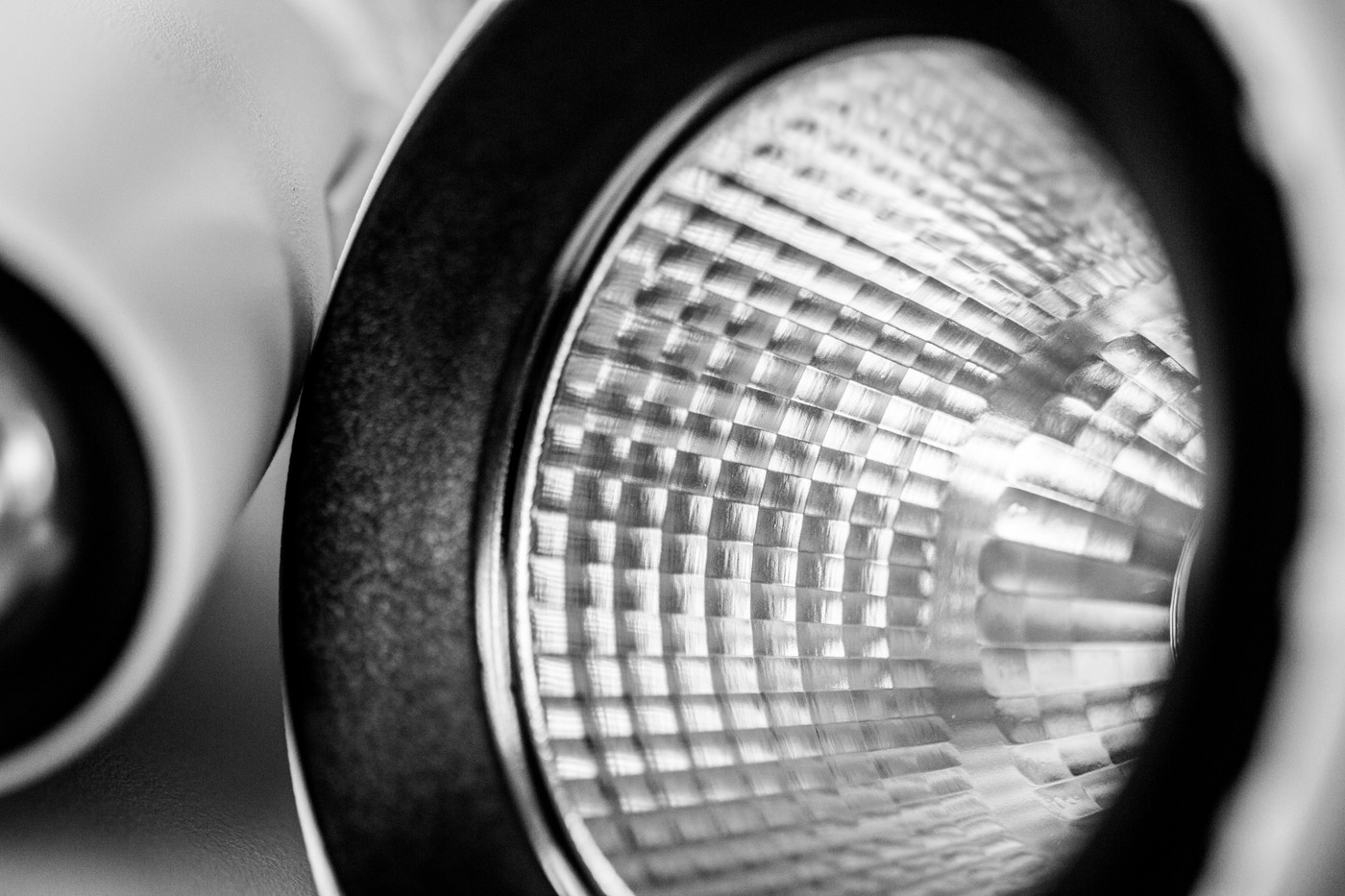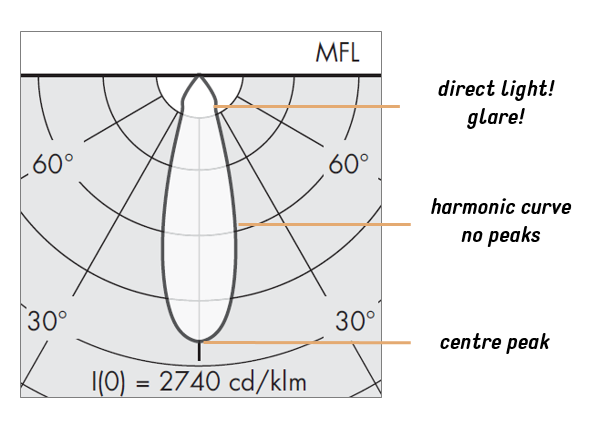
Lighting knowledge
Return of Light
The future of efficiency. We have defined a new performance indicator for the measurement of lighting efficiency based on our retail lighting expertise.
Initial purchase and maintenance expenses are the two key factors in any assessment of store lighting costs. LED technology has already reduced maintenance expenses to a very low level compared with conventional technology. The cost of LED components is also still declining, which further reduces initial purchase expenses. The problem is that Light Output Ratio LOR is still used to define the effectiveness of a lighting scheme. It is measured from the outside edge of a luminaire and tells us what percentage of the light is actually output. At first glance, LOR appears to facilitate a comparison of different luminaires. However, it doesn’t tell us anything about how much light is actually illuminating the merchandise, even though that’s an essential aspect of retail lighting performance. A retail lighting scheme has to efficiently guide the light to accentuate the products so that they catch the consumer’s eye and register in their brain.
Light Output Ratio (LOR) defines efficiency in terms of how much light gets lost inside the luminaire. LOR is the ratio between the luminous flux emitted by the luminaire and the nominal flux of the LED source.
At present there is no generally valid definition for LOR in luminaires with integrated LEDs because the original ratio was developed back when light bulbs were still being replaced. The biggest weakness of LOR in terms of measuring retail lighting efficiency is that it doesn’t take into account the amount of light reaching the target surface, e.g. a product.
And that’s an important criterion in any efficient retail lighting concept.
Everything outside the field angle is scatter light, which means it isn’t directed at the target surface and is wasted from an ROL perspective.

We have taken a different approach to defining efficiency because, in a custom-designed reflector, efficiency relates to the amount of light being directed onto the target surface – your products.
We measure maximum luminous intensity at the centre of the light cone. The beam spread is the angle where luminous intensity is exactly half that of maximum luminous intensity. The “field angle” is the angle where luminous intensity is 10% that of the maximum luminous intensity. Everything outside the field angle is scatter light, which means it isn’t directed at the target surface and is wasted from an ROL perspective.
We have defined a new performance indicator for the measurement of lighting efficiency based on our retail lighting expertise. Efficient light is directed onto the product, not scattered throughout the room. We call it Return of Light (ROL).
The reflector cut-out has a significant influence on the proportion of light which is directed onto the products. A low reflector captures more light and efficiently directs it onto the target surface with the result that more light in a better quality is available to illuminate the products. Although a flat reflector has a better Light Output Ratio (LOR), it produces a greater amount of diffused direct light. Many luminaries have a high direct light component but also generate glare because the light is being diffused in the room rather than directed at the merchandise. LOR is therefore not an indicator of the efficiency of targeted light.

Every industry, whether automotive, food, fashion, health & beauty, or home store, has its own target group and product-specific features. These are incorporated into our planning just as naturally as your wishes and aims. Please contact us and we will be happy to help you.
